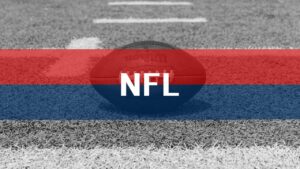The NFL’s first-day injury spike is no accident.
With the Miami Dolphins losing cornerback Artie Burns for the season and with offensive tackle Bayron Matos airlifted to hospital, I have taken a deep dive into why we are seeing more and more injuries in the early days of training camp.
Each summer, as NFL training camps open across the country and a troubling pattern emerges – injuries.
Torn ligaments, muscle strains and season-ending setbacks frequently headline the early days of camp.
While these incidents may appear random, the uptick in injuries during the first 48 hours is anything but coincidental. Experts point to a confluence of physiological stress, inadequate ramp-up protocols and offseason gaps in preparation.
A sudden spike in demands
Perhaps the most immediate cause is the dramatic escalation in physical intensity.
While players spend the offseason training, those workouts – often individualised and non-contact – rarely replicate the speed and collision-heavy nature of a full NFL practice.
Organised Team Activities (OTAs) and minicamps are tightly regulated, with limited contact and no pads.
In contrast, day one of camp features high-tempo drills, full-speed evaluations and the beginning of live positional battles. For the body, it is a rapid shift, akin to flooring the gas pedal after months on a bicycle.
The ramp-up gap
Unlike other major sports that ease into competition with extended preseason calendars, the NFL’s structure offers little gradual buildup.
Though many players work out diligently in the offseason, they often lack the stop-start explosiveness, change-of-direction drills and position-specific demands that training camp requires.
Without a structured, progressive load increase, athletes are particularly vulnerable to soft tissue injuries such as hamstring strains, groin pulls and calf tears during the early days of camp.
The weight of expectation
The first day of camp is also defined by pressure – both external and internal.
For undrafted rookies, veterans on the roster bubble or players returning from injury, camp is a proving ground. Every rep is filmed. Every movement is graded.
That scrutiny can push athletes to overextend, even through minor pain or fatigue. The result: heightened risk of injury due to overcompensation or mechanical breakdown.
Field conditions and environmental stress
Practice surfaces can also play a role. Not all facilities offer game-level field consistency and differences in turf, footing or field maintenance can contribute to non-contact injuries like ACL tears.
Compounding that is the midsummer heat. Dehydration, muscle fatigue and reduced cognitive focus in high temperatures create ideal conditions for injury.
Offseason limitations
Finally, the NFL’s Collective Bargaining Agreement restricts the amount of team-supervised offseason activity.
While these rules aim to protect players, they also reduce opportunities for clubs to ensure conditioning standards are met. Some veterans recovering from surgery or younger players adjusting to pro routines may enter camp underprepared.
Injuries on day one are not just bad luck. They are the result of structural flaws in how the league transitions from offseason to competition.
Addressing them requires a smarter, science- and data-driven approach that prioritises gradual adaptation, improved player monitoring and a cultural shift toward sustainable performance.






